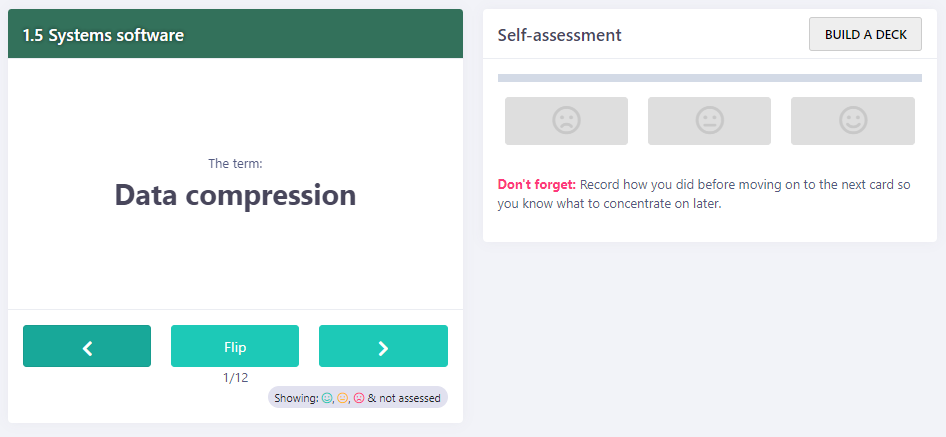Flashcards
Flashcards are a common staple of revision, and they are included in Smart Revise too. There are five significant differences between traditional flashcards and Smart Revise Terms.
- They are electronic.
- They are written by experienced teachers and examiners.
- They operate in reflective or interactive mode.
- The student must record a self-assessment before moving to the next card.
- There are many ways to build a deck for a revision session.
Mobile friendly
Although Smart Revise is a website and not an app, Terms works perfectly on a mobile phone. This means students can revise anytime, anywhere without carrying a bulky deck of cards around and risk dropping it!
Written by teachers
Terms provides students with pre-written flashcards. That means there is no risk of a student recording and revising incorrect material that is either too extensive or too brief.
The set of key terms for each course have been identified by forensically analysing the course specification, teacher guidance documents, examination board topic packs, past paper mark schemes and clarification documents.
The purpose of flashcards
Active recall with flashcards teaches your brain to remember subject specific terminology, a concept or process without context clues. By learning in this way stronger neuron connections develop because it is more difficult for your brain, making it more likely you can remember the information in the future.
It is important that flashcards only contain the minimum amount of concise information.
Although it could be a valuable part of the revision process for students to write their own cards, there is a risk they may miss something important or record inaccurate information on the card. That is why pre-written flashcards created by experienced teachers is a better option.
There is a risk that flashcards can become too passive. That is why Smart Revise supports self-assessment and interactive modes.
Reflective and interactive
Terms can be used in one of two modes: reflective mode works in the traditional way. Students look at the front and the back of the card. Interactive mode requires students to write a definition to the term before flipping to the back of the card.
In interactive mode students can see the last definition they wrote before attempting to write a better one.

Self-assessment
Before students can progress to the next card after flipping it, they must record a simple red, amber, green (RAG) rating of their confidence. This allows teachers to easily see the least and most well understood terms for individuals and across the whole class. It also facilitates deck building where students or Smart Revise can choose the best terms for an individual student to revise.
Build a deck
Teachers (or students if enabled) can limit the number of topics included in a deck. They can also choose to look at any combination of unseen, red, amber or green cards. Smart Revise also has built-in support for the Leitner system, automating which cards students should revise each day to ensure spaced and prioritised learning.